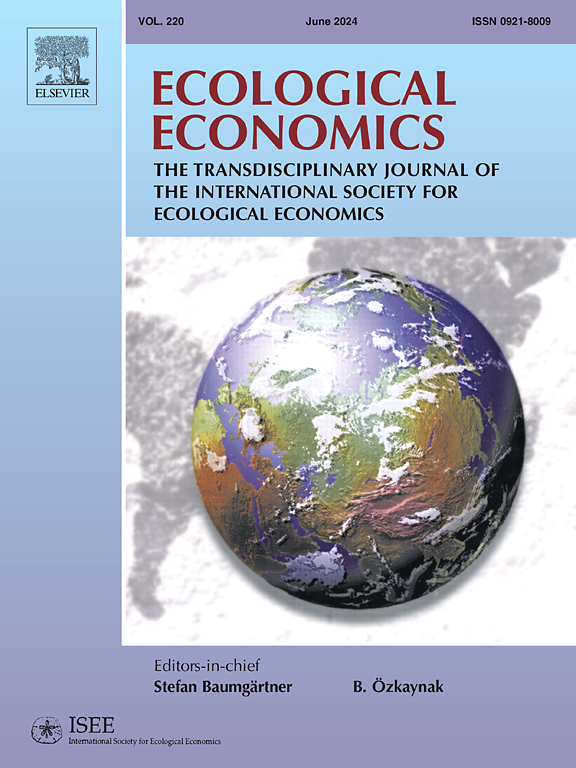The risk-based environmental footprints and sustainability deficits of nations
IF 6.6
2区 经济学
Q1 ECOLOGY
引用次数: 0
Abstract
The implementation of environmental sustainability accounting has attracted academic attention; however, methods to accommodate local biophysical limitations remain underexplored. We developed a novel risk–footprint environmental sustainability assessment (Risk–Footprint ESA) framework to measure a country's environmental sustainability with respect to local biophysical capacity to help nations take collective action to stay within a safe operating space. Our findings indicated that the global environmental footprints of water, land, energy, carbon, nitrogen, and phosphorus witnessed variable increases of 325 %, 39 %, 36 %, 95 %, 6 %, and 3 % respectively, between 1990 and 2015. China, India, and the United States exhibited the largest footprints across these categories. Excluding water and land use, it appears that the global population is not maintaining lifestyles within the limits of the planet. Furthermore, the most effectively managed resource was land, with nearly 95 % of the countries maintaining sustainable reserves from 1990 to 2015. Conversely, nitrogen presents the greatest challenge in achieving sustainability, with only 25 % of the countries managing a reserve for this indicator. Additionally, there was a correlation between rising affluence and exceeding sustainability limits, suggesting that low income reduces the chances of eradicating poverty and diminishes the ability to maintain environmental sustainability.

求助全文
约1分钟内获得全文
求助全文
来源期刊

Ecological Economics
环境科学-环境科学
CiteScore
12.00
自引率
5.70%
发文量
313
审稿时长
6 months
期刊介绍:
Ecological Economics is concerned with extending and integrating the understanding of the interfaces and interplay between "nature''s household" (ecosystems) and "humanity''s household" (the economy). Ecological economics is an interdisciplinary field defined by a set of concrete problems or challenges related to governing economic activity in a way that promotes human well-being, sustainability, and justice. The journal thus emphasizes critical work that draws on and integrates elements of ecological science, economics, and the analysis of values, behaviors, cultural practices, institutional structures, and societal dynamics. The journal is transdisciplinary in spirit and methodologically open, drawing on the insights offered by a variety of intellectual traditions, and appealing to a diverse readership.
Specific research areas covered include: valuation of natural resources, sustainable agriculture and development, ecologically integrated technology, integrated ecologic-economic modelling at scales from local to regional to global, implications of thermodynamics for economics and ecology, renewable resource management and conservation, critical assessments of the basic assumptions underlying current economic and ecological paradigms and the implications of alternative assumptions, economic and ecological consequences of genetically engineered organisms, and gene pool inventory and management, alternative principles for valuing natural wealth, integrating natural resources and environmental services into national income and wealth accounts, methods of implementing efficient environmental policies, case studies of economic-ecologic conflict or harmony, etc. New issues in this area are rapidly emerging and will find a ready forum in Ecological Economics.
 求助内容:
求助内容: 应助结果提醒方式:
应助结果提醒方式:


